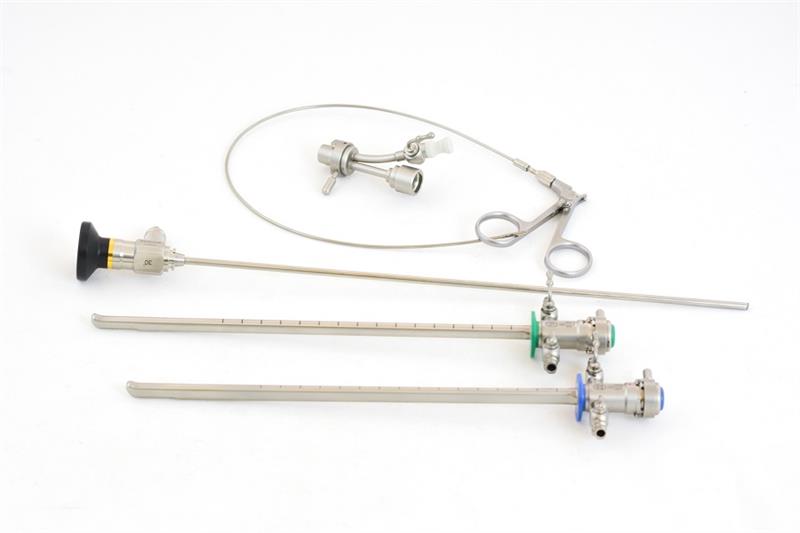Cystoscopes are indispensable tools in urology, providing unparalleled access to the bladder and urethra for diagnostic and therapeutic purposes. Their superior quality and versatility make them essential in the diagnosis and treatment of various urological conditions. This blog will delve into the intricacies of cystoscopes, their types, applications, and the advancements that have made them a cornerstone in urological practice.
Understanding Cystoscopy
Cystoscopy is a procedure that allows urologists to examine the interior of the bladder and urethra. By using a cystoscope, a thin tube with a light and camera, doctors can diagnose and treat conditions such as bladder tumors, stones, inflammation, and urethral strictures. This minimally invasive procedure offers a detailed view of the urinary tract, enabling precise intervention and effective patient management.
Types of Cystoscopes
Cystoscopes come in various designs, each tailored to specific diagnostic or therapeutic needs. The two primary types are rigid cystoscopes and flexible cystoscopes.
Rigid Cystoscopes
Rigid cystoscopes are straight, non-flexible instruments typically used in operating rooms for diagnostic and surgical procedures. They provide high-resolution images and are preferred for tasks that require precision, such as biopsies or stone removal.
We've minimized glare to prevent unintended reflections and offer a range of AOVs at 0°, 12°, 25°, 30°, and 70°. Available in two diameters (2.9mm and 4mm), Tru-Vu® Laser Cystoscope system features a large port for continuous flow and an 8 FR working channel, accompanied by a 23 FR small diameter sheath.
Key Features:
- High-Resolution Imaging: Provides clear, detailed views of the bladder and urethra.
- Durability: Constructed from robust materials for repeated use.
- Precision: Ideal for surgical interventions due to their rigidity.
Applications:
- Biopsies: Sampling tissues for pathological examination.
- Stone Removal: Extracting bladder stones using specialized tools.
- Tumor Resection: Removing bladder tumors through endoscopic techniques.
Flexible Cystoscopes
Flexible cystoscopes are bendable instruments that can navigate the curves of the urethra with ease. They are often used in outpatient settings and provide more comfort for the patient during the procedure.
Key Features:
- Flexibility: Allows navigation through the urethra’s natural curves.
- Patient Comfort: Reduces discomfort during the procedure.
- Versatility: Suitable for a wide range of diagnostic and therapeutic procedures.
Applications:
- Diagnostic Examinations: Investigating symptoms such as blood in the urine or recurrent urinary tract infections.
- Stent Placement: Inserting ureteral stents to facilitate urine flow.
- Foreign Body Removal: Extracting objects from the bladder.
Advancements in Cystoscope Technology
The evolution of cystoscope technology has significantly enhanced their functionality and the overall patient experience. Modern cystoscopes incorporate advanced imaging technologies and ergonomic designs, making them more effective and user-friendly.
High-Definition Imaging
Modern cystoscopes are equipped with high-definition cameras that provide superior image quality. This allows urologists to detect even the smallest abnormalities within the bladder and urethra, ensuring accurate diagnoses and effective treatments.
Digital Cystoscopes
Digital cystoscopes transmit images directly to a monitor, offering a magnified and detailed view of the urinary tract. This technology facilitates better visualization and documentation of the procedure, which is crucial for patient records and follow-up care.
Narrow Band Imaging (NBI)
NBI is an advanced imaging technique that enhances the visibility of blood vessels and mucosal patterns. It is particularly useful in detecting bladder cancer at an early stage, as it highlights abnormal tissue more clearly than standard white light cystoscopy.
Ergonomic Designs
Contemporary cystoscopes are designed with ergonomics in mind, ensuring ease of use for the clinician and comfort for the patient. Features such as lightweight construction, adjustable handles, and smooth insertion tips contribute to a more efficient and comfortable procedure.
Applications of Cystoscopy
Cystoscopy is a versatile procedure with numerous applications in urology. Its ability to provide direct visualization of the urinary tract makes it invaluable in diagnosing and treating a variety of conditions.
Diagnostic Applications
Bladder Cancer Detection
Cystoscopy is the gold standard for diagnosing bladder cancer. It allows for the direct visualization of tumors within the bladder, and biopsy samples can be taken during the procedure for histopathological analysis.
Urinary Tract Infections (UTIs)
Recurrent UTIs may necessitate a cystoscopic examination to identify underlying causes such as bladder stones, tumors, or anatomical abnormalities. Cystoscopy helps in pinpointing the exact issue, enabling targeted treatment.
Hematuria (Blood in Urine)
The presence of blood in the urine (hematuria) is a common indication for cystoscopy. The procedure helps in identifying the source of bleeding, which could range from urinary tract infections to bladder cancer.
Therapeutic Applications
Bladder Stone Removal
Cystoscopy is frequently used to remove bladder stones. Specialized tools are passed through the cystoscope to grasp and extract the stones, providing immediate relief to the patient.
Tumor Resection
Bladder tumors can be resected using electrocautery or laser techniques through the cystoscope. This minimally invasive approach reduces the need for open surgery and allows for quicker recovery.
Urethral Stricture Treatment
Urethral strictures, or narrowings of the urethra, can be treated using a cystoscope. The stricture can be dilated or incised to restore normal urine flow.
Meatal dilators are specialized medical instruments designed to manage urethral strictures by gently enlarging the urethral opening (meatus). This procedure helps restore normal urinary flow and alleviate symptoms such as difficulty urinating, urinary retention, or recurrent urinary tract infections.
Preparing for a Cystoscopy
Preparation for a cystoscopy involves a few simple steps to ensure the procedure goes smoothly. Patients are typically advised to empty their bladder before the procedure, and they may be given a mild sedative or local anesthetic to minimize discomfort.
During the Procedure
The patient lies on their back with their knees bent and apart. The cystoscope is lubricated and gently inserted into the urethra, gradually advanced into the bladder. The urologist examines the urinary tract, noting any abnormalities and performing any necessary interventions.
Post-Procedure Care
After the procedure, patients may experience mild discomfort or a burning sensation during urination, which usually subsides within a day or two. Drinking plenty of water helps to flush out the bladder and reduce irritation. In some cases, a short course of antibiotics may be prescribed to prevent infection.
Cystoscopes are indispensable tools in the field of urology, offering superior quality and versatility in diagnosing and treating various urinary tract conditions. Their advanced imaging capabilities, ergonomic designs, and range of applications make them essential for modern urological practice. By providing clear visualization and enabling precise interventions, cystoscopes enhance patient care and contribute to better clinical outcomes.
As technology continues to evolve, cystoscopes will undoubtedly become even more sophisticated, further improving their diagnostic and therapeutic capabilities. Whether for routine examinations or complex surgical procedures, cystoscopes will remain a cornerstone of urological care, ensuring that patients receive the best possible treatment with minimal discomfort and recovery time.
Explore our comprehensive range of high-quality cystoscopes and accessories to find the perfect solutions for your practice. Empower your urological procedures with the latest tools and technologies, and ensure the best care for your patients.
If you're looking for more information or equipment/instruments and supplies related to cystoscopy, check out our full endoscopy portfolio. This can include everything from cystoscopes themselves to additional instruments like graspers, forceps, sheaths, and more.



